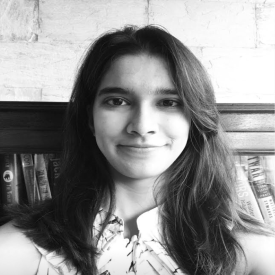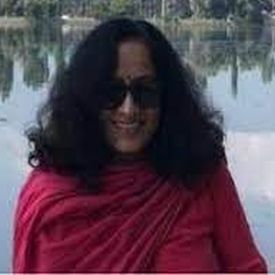How class and caste influence school choice
Families' socioeconomic status impacts how parents make decisions regarding their children's education. Taking into account the interplay of caste and class, this paper finds that when families are to...
- Articles
A permanent cordon-sanitaire: Dalits and Muslims in urban India
Near-perfect segregation and hierarchical ordering of residential space, based on caste or religious identity, is a well-known feature of rural India. Studies have also documented the persistence of s...
-
 Naveen Bharathi
Naveen Bharathi  Deepak Malghan
Deepak Malghan  Andaleeb Rahman
Andaleeb Rahman  09 October, 2020
09 October, 2020
- Articles
Are women politicians good for economic growth?
There has been a phenomenal global increase in the proportion of women in politics in the last two decades, but there is no evidence of how this influences economic performance. This article investiga...
-
 Sonia Bhalotra
Sonia Bhalotra  05 December, 2018
05 December, 2018
- Articles
Urbanisation, gender, and social change: Role of the media in shaping women’s political preferences
What is the role of information sources in forming political preferences, and under what conditions do women have the cognitive agency to form political opinions distinct from men? To examine this, us...
-
 Sumitra Badrinathan
Sumitra Badrinathan  Deepaboli Chatterjee
Deepaboli Chatterjee  Devesh Kapur
Devesh Kapur  Neelanjan Sircar
Neelanjan Sircar  10 December, 2021
10 December, 2021
- Perspectives
Urbanisation, gender, and social change: Intra-marital hierarchies and perceptions about working mothers
Women in India spend thrice as much time doing unpaid domestic work compared to the men in their household, and twice as much time on care-giving activities for children and dependent adults. Based on...
-
 Shubhangi Karia
Shubhangi Karia  Tanvi Mehta
Tanvi Mehta  09 December, 2021
09 December, 2021
- Articles
Urbanisation, gender, and social change: Women’s mobility in north India
Although India has experienced structural and social changes that promote gender equality in many respects, women’s physical mobility remains very low. Analysing primary data from three urban cluste...
-
 Vidisha Mehta
Vidisha Mehta  Harish Sai
Harish Sai  08 December, 2021
08 December, 2021
- Articles
Urbanisation, gender, and social change: Why is female labour force participation so low in India?
India’s low female labour force participation is a complex social phenomenon, resulting from – among other things – patriarchal norms, rural-urban transitions, and a mismatch of supply and deman...
-
 Deepaboli Chatterjee
Deepaboli Chatterjee  Neelanjan Sircar
Neelanjan Sircar  06 December, 2021
06 December, 2021
- Articles
Introduction to e-Symposium: Urbanisation, gender, and social change in north India
Urbanisation in India is reshaping established social and economic patterns of behaviour, in ways that scholars are yet to fully comprehend. India’s rapid urbanisation invites several pressing quest...
-
 Devesh Kapur
Devesh Kapur  Neelanjan Sircar
Neelanjan Sircar  Milan Vaishnav
Milan Vaishnav  06 December, 2021
06 December, 2021
- Symposium
Empowering women through participatory theatre
Twenty-nine percent of women in India report having suffered intimate-partner violence. Based on a field study involving 92 villages in the state of West Bengal, this article shows that community-base...
-
 Karla Hoff
Karla Hoff  Jyotsna Jalan
Jyotsna Jalan  Sattwik Santra
Sattwik Santra  25 November, 2021
25 November, 2021
- Articles
Inter-gender and intra-gender gaps in land ownership in India
While women’s landownership is recognised as a key indicator of their economic empowerment, there are no detailed estimates of how many and which women own land in India. Analysing longitudinal data...
-
 Bina Agarwal
Bina Agarwal  Pervesh Anthwal
Pervesh Anthwal  Malvika Mahesh
Malvika Mahesh  24 November, 2021
24 November, 2021
- Articles
Do promises work? Assessing long-term benefits of ‘Apni Beti Apna Dhan’ programme
During 1994-1998, the state government of Haryana ran a conditional cash transfer programme to address the issue of child marriage: at the time of a daughter’s birth, parents from marginalised secti...
-
 Shreya Biswas
Shreya Biswas  Upasak Das
Upasak Das  03 November, 2021
03 November, 2021
- Articles
Is OBC reservation good for development?
The affirmative action debate has always been riddled by the question of merit versus social justice, and discussions around having a caste census have once again reignited the controversy around rese...
-
 Poulomi Chakrabarti
Poulomi Chakrabarti  20 October, 2021
20 October, 2021
- Articles
Does access liberalise gender norms around phone use for rural women?
Despite improved connectivity, deep-rooted gender norms continue to shape access to and use of mobile technologies by women in India. This note discusses preliminary findings from a study, which sugge...
-
 Giorgia Barboni
Giorgia Barboni  Natalia Rigol
Natalia Rigol  Simone Schaner
Simone Schaner  Natalie Theys
Natalie Theys  13 October, 2021
13 October, 2021
- Notes from the Field
Measuring caste inequality across Indian states
Although recent research on inequality shows that upper castes have the highest levels of material well-being, there is a wide variation in caste inequality across India. Measuring three forms of cast...
-
 Poulomi Chakrabarti
Poulomi Chakrabarti  13 September, 2021
13 September, 2021
- Articles
Do quotas in public sector employment for disadvantaged groups enhance their welfare?
Affirmative action policies remain controversial with many arguing that benefits come at the expense of those excluded, and accrue disproportionately to the elite in disadvantaged groups. Analysing na...
-
 Nishith Prakash
Nishith Prakash  10 September, 2021
10 September, 2021
- Articles
Twitter feed
Tweets by Ideas4IndiaMost Popular Social Identity Posts
A division of labourers: Caste identity and efficiency in India
Castes in India are closely associated with certain occupations and determine the jobs done by millions. This study uses a new dataset to show that a large proportion of workers still work in their ca...
 Guilhem Cassan
Guilhem Cassan  Daniel Keniston
Daniel Keniston  Tatjana Kleineberg
Tatjana Kleineberg  18 November, 2022
18 November, 2022
- Articles
Hindu-Muslim fertility differentials in India: An update
Building on past research, Saswata Ghosh and Pallabi Das estimate the state- and district-level fertility differentials between Hindus and Muslims using data from the latest round of the NFHS. They sh...
 Pallabi Das
Pallabi Das  Saswata Ghosh
Saswata Ghosh  18 April, 2023
18 April, 2023
- Articles
Sex ratios and religion in India and South Asia
In South Asia, low child sex ratios are increasingly an isolated Indian phenomenon. Within India, child sex ratios are ‘normal’ among Christians and Muslims but much lower among Hindus, Sikhs, and...
 Swati Narayan
Swati Narayan  03 April, 2019
03 April, 2019
- Articles





 04 March, 2024
04 March, 2024






